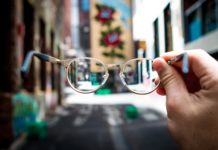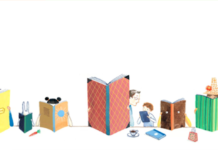What’s working in ecommerce these days? With so many ecommerce platforms offering so many customization options, it’s surprising how consistent most online shopping experiences feel. In some ways, this is good – a common pattern for choosing a size and adding it to your cart increases comfort and thereby conversion.
However, in a world where Amazon is eating ecommerce’s lunch, online retailers need to stand out just to stay alive. Here’s who’s doing it well, and the ones I really wanted to like but fell short.
What Impressed Me
Allbirds

It’s a bold move to sell things online with no ratings and reviews. Allbirds gets away with it because of their limited styles and cult-like following. They figure they don’t need to waste valuable space reassuring you that the product is worth it, because you’ve already heard that from your friends.

Instead, they use that space to educate you on what makes them different. From a cute sheep teaching you about wool to a breakdown of the components of the shoe (and how to buy replacements), Allbirds feels like a natural combination of a shopping experience with a single-page, parallax-type web experience we’ve become familiar with for other businesses.
Where they can improve: If you’re not going to have reviews, the social proof needs to be stronger. There is a carousel of photos from social media, but they’re not connected to the product (if the photo shows one color way, for instance, you can’t click it to update the selected color on the product details page).
Rolex

You can only buy Rolex watches in stores, so why is it on a list of good ecommerce experiences? Because they used that limitation to create a fun, sticky online experience highly consistent with their brand, with lessons for online retailers to learn.
One thing Rolex.com does exceptionally well is draw you into the experience through video. Big, sexy imagery is peppered throughout the site, along with aspirational and educational videos.

The most fun part about the site is the Configurator tool, which allows you to pick a watch style and customize it to your liking. It’s like window shopping with none of the guilt. And it appeals to their target customer, who values individuality and the one-of-a-kind. It’s also just fun for the rest of us to see how much that diamond-encrusted rose gold Pearlmaster would cost ($58,000, if you’re wondering).
How they can improve: The navigation isn’t working. It’s a combination of a hamburger menu and a very slim top nav. Once you get into a watch style, it’s hard to get back out. The Configurator tool is buried down on the category page and you can’t easily move from configuring one model to another.
What Let Me Down
Big O Tires

I really wanted to love the Shop by Vehicle feature on the Big O homepage. Like many people, I don’t know that much about how my car actually works, such as what size tires it needs. I do, however, know what kind of car I have.
Big O lets you input your make and model and spits back out for you a list of tires that match your vehicle. Hooray! The most intimidating part of tire shopping, solved.
However, I don’t totally love it because once you get to your list of potential tires, you can’t easily compare them (there’s a comparison feature I couldn’t figure out) and the available discounts are distracting rather than helpful. Overall, the site is quite busy, with competing colors and and overwhelming graphics.
REI

Of any retailer, REI has a golden opportunity to create an immersive shopping experience. Its products are used in aspirational ways every day – camping, hiking, mountain climbing, skiing, and more. Imagine it – you’re shopping for climbing shoes and are whisked away to a mountainside, where you hear the whistle of wind and the scrape of shoes on rock. You can feel yourself there, and damnit, you need those shoes to make it happen.
I wanted to love REI’s web experience because they’ve done a fairly good job of creating a unified experience amongst everything they sell – from hammocks to a 9-day trek up Mount Kilimanjaro. The purchase behaviors and necessary information are completely different, and they handle this gracefully.
However, the size of product images, insufficient zoom functionality, and lack of video merchandising really limits the wow factor. When sitting at my desk at lunch, I want to be transported to faraway places as I imagine using my new gear, not squinting to see the specifics of it.
It doesn’t take much these days to sell things online. But it takes a lot to stand out. Big imagery, immersive video, and connecting social proof to the shopping experience are key ways to make a splash in the very big pond of ecommerce.
Also published on Medium.

















